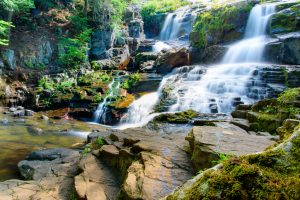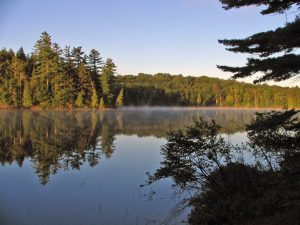Summary from Just and Lasting Change by Associate Professor, Noam Schimmel

An article in Britain’s Guardian newspaper recently suggested that as much as 50% of the planet needs to be set aside from human habitation to stave off mass environmental degradation and irreversible destruction of animal and plant species.
The intention behind this argument is a good one: to conserve the earth’s biodiversity and natural life forms.
These have their own intrinsic value, but also ultimately benefit people in ensuring that natural resources are protected rather than exploited to the point of unsustainability; that air, land, and water are protected in ways that promote public health, and that global warming and other forms of environmental harm are mitigated.
But there is a fallacy at the heart of the notion that the primary way to advance conservation is by removing people from nature.
People and nature are not necessarily adversaries. There are many examples, including contemporary ones, of people serving as successful guardians of nature, rather than as antagonists to the environment and its conservation.
The misguided notion that people and nature are adversaries has sullied conservation since the incarnation of the modern conservation movement. It needs to be acknowledged and addressed because it both hinders and slows environmental conservation and can contribute to denying the human rights of people who depend on nature for their livelihoods.
For many people, as individuals and as communities, their lives, values, and cultures are intimately and inextricably bound with nature.
The model of excluding people from national parks and conservation areas that was historically widespread when the US national parks were created – and entailed severe violations of the rights and welfare of Native Americans – is not an ethical model. It does not respect principles of human rights and international human rights law and therefore it should not and cannot be applied today.
Unfortunately, it remains all too common across many countries – including those in Africa, Asia, and Latin America with particularly high biodiversity – where indigenous and tribal peoples are frequently forcibly displaced from their native lands to create national parks and nature reserves devoid of people. This is often a consequence of the mistaken notion that the best way to conserve nature is to evict people from living within it and prevent them from living with it.
These evictions not only harm the rights and welfare of these peoples, they undermine their ability to serve as stewards of the land and reject their traditional role as its caretakers.
The London-based NGO Survival International has amply demonstrated with rigorous evidence the ways in which some contemporary conservation efforts, built on a model of forcibly separating people from land – particularly tribal and indigenous peoples – is destructive to both people and nature.
Researchers at Future Generations University, based in West Virginia, have demonstrated through their research and practice that ecologically significant eco-systems on a large scale can be protected while respecting the rights and welfare of their inhabitants simultaneously.
This is as true in North America as it is in Africa, Asia, and Latin America.
New York state quietly pioneered this model of inclusive conservation in Adirondack State Park, which was established in 1885.

Adirondack State Park is six million acres in size. Many people live within the park and half of its land is privately owned. Yet the rules which govern the park bring together the government and private landowners in a way that strikes a balance between the economic, social, and development needs of these landowners while simultaneously protecting the land and insuring the sustainability of the park and its ecological health for the public at large.
To be sure, this model poses distinct challenges born of its flexibility and dynamic nature and the inevitable differences, tensions, and conflicts between the values and needs of the different parties, as well as their priorities and expectations.
But historically and still today, the model has remained successful at respecting the rights and welfare of people while concurrently protecting the land and ensuring its vitality and ecological integrity.
At a time of extreme and often destructive political and policy polarization in the United States – we can look to this kind of model which is built on dialogue, compromise, pluralism, and mutual respect to advance the preservation of nature and the protection of our land, water, and air and the health and well-being they enable.
Partnership with people in an inclusive and sustainable way that respects their rights and needs and integrates them with care for the environment rather than excluding them will enable greater conservation that benefits us all.


